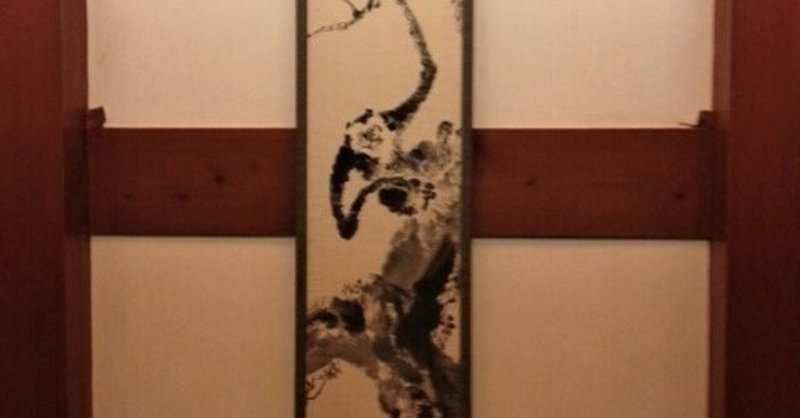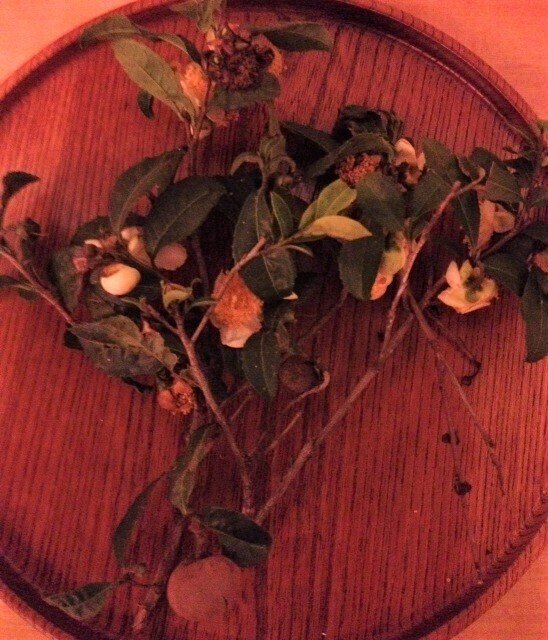
李白、杜甫、杜牧、そして芭蕉もお猿さんが大好き。 【一茶庵稽古追想】 Li Bai, Du Fu, Du Mu, and Basho also love monkeys.
今宵の煎茶の稽古の題材は「猿」だった。
猿は秋の季語ではないが、漢詩や俳句で晩秋を表現する動物としてよく登場する。
その昔、中国の有名な詩人の李白、杜甫、杜牧などの長江の三狭の下りで詠まれた詩の中に「猿」がよく登場する。そのほとんどは悲哀のストーリーに使われている。
The subject of the sencha lesson tonight was "monkey".
Monkey is not a seasonal word for autumn, but it often appears as an animal that expresses late autumn in Chinese poetry and haiku. A long time ago, "monkey" often appeared in poems written by the famous Chinese poets Li Bai, Du Fu, and Du Mu in the Poetry of the Three Gorges of the Yangtze River. Most of them are used in sorrowful stories.
芭蕉が詠んだ句にも「初しぐれ猿も小蓑をほしげ也」というのがある。芭蕉が46歳のときに、奥の細道の旅を終えて帰郷の折、伊賀越えの山中で初時雨にあって詠まれたものとされている。芭蕉最高傑作の一つとして有名である。
この句にも「猿」が登場している。ただの風景描写ではない。芭蕉も、そのときの情感を「猿」に例えたのだろう、と想像を巡らしてみた。
In the phrase Basho wrote, "Hatsushigure Monkey also wants a small Mino". It is said that when Basho was 46 years old, he was sung by the first rain in the mountains over Iga when he returned home after completing a trip to the back alley. It is famous as one of Basho's masterpieces.
"Monkey" appears in this phrase as well. It is not just a landscape description. Basho also wondered if his emotions at that time were likened to a "monkey."


では、なぜ? 猿が悲哀のストーリーによく登場するのか、というと。
それは、猿の「鳴き声」にあるようだ。鳴き声が、中国の詩人たちの悲哀の感情をさそい、聴覚的な特色つまり「かん高く鋭い声」がそれに結びついた、といわれている。
そんなことを思いながら飲む玉露の味と、お茶の花と実の香りがなんともいえない秋の深さを感じさせてくれた。
So why? Why do monkeys often appear in sorrowful stories?
It seems to be in the monkey's "cry". It is said that the bark evoked the sorrowful feelings of Chinese poets, and the auditory character, or "high and sharp voice," was associated with it.
With that in mind, the taste of gyokuro and the scent of tea flowers and fruits made me feel the depth of autumn.


記事は、2013年11月に心と体のなごみブログに掲載されたもの。修正を加え転載。
レポート & 写真 / 渡邉雄二 場所 / 文人会一茶庵 掛軸 / 文人会一茶庵所蔵 Reported & Photos / Yuji Watanabe
よろしければサポートお願いします。日本の伝統文化に関心を寄せています。若いころに文化圏の異なる地域の方たちとの交流で日本のことをあまりにも知らなかったことに気づかされ、それがきっかけで広く浅く学んでいます。拙いレポートですが、お目に留めていただければ幸です。
